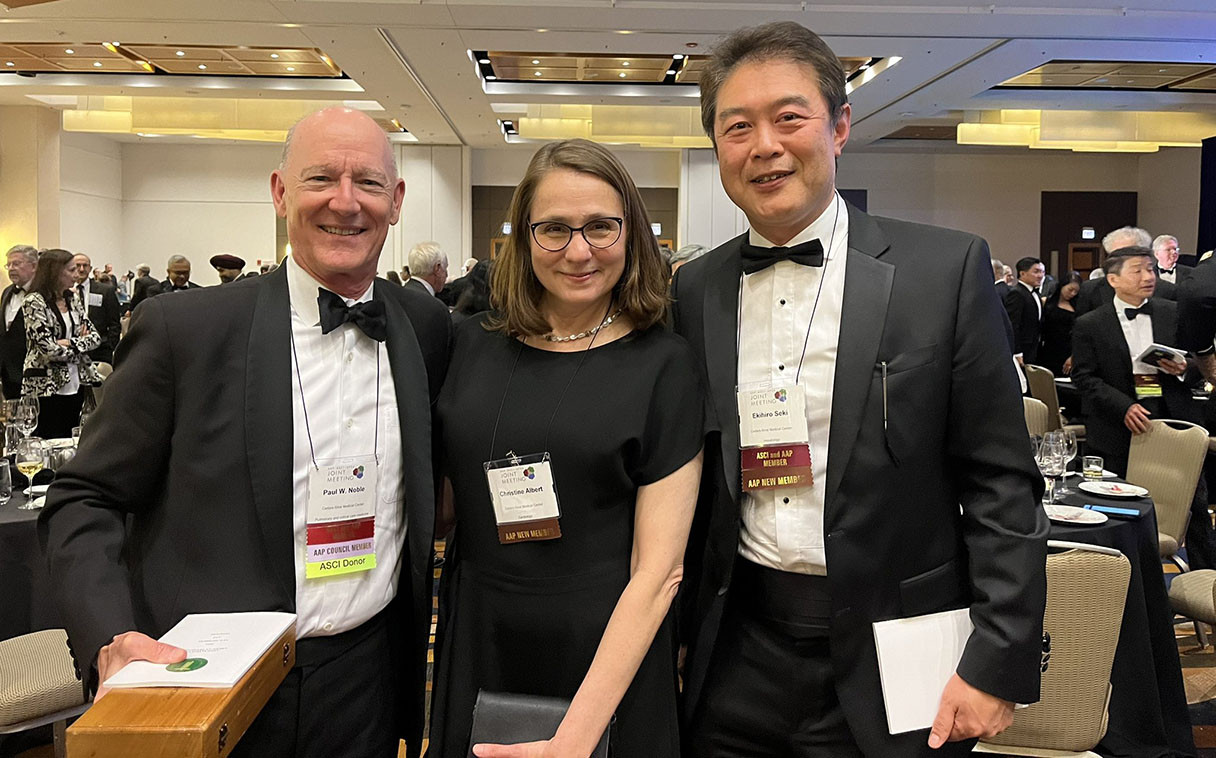Yu earned his Ph.D. in theoretical high energy physics at Michigan State University with the hard work he put into his thesis. He has also continued with the research as a postdoctoral fellow at the U.S. Department of Energy’s Thomas Jefferson National Accelerator Facility.
Now, if there was any lingering doubt, the quality of Yu’s thesis has been affirmed: He has been awarded the 2024 J.J. and Noriko Sakurai Dissertation Award in Theoretical Particle Physics for the work.
“It feels incredible to win this big award,” Yu said. “Honestly, I was also a little bit surprised when I got the news, but I’m very happy that they acknowledged the quality of my thesis. And I really owe thanks to my wife.”
The APS Division of Particles and Fields Executive Committee established the award in 2010 to recognize early-career scientists who have performed novel and outstanding doctoral thesis work. It is named after Jun John Sakurai, who was a particle physicist and theorist, and his wife, Noriko Sakurai, to recognize her role in the establishment and growth of the J.J. Sakurai Prize Fund.
The award was presented to Yu at the APS April Meeting in Sacramento, where he also delivered a talk about his work.
Yu’s thesis work was completed at Michigan State University with guidance from his advisor, C.-P. Yuan. The work has two parts.
Resolving the proton’s interior
The first part began in 2020, when he visited Jefferson Lab and began collaborating with Jefferson Lab Associate Director for Theoretical & Computational Physics Jianwei Qiu in the lab’s Theory Center. There, Yu started working on calculations related to the theory of the strong interaction, which describes the interactions between quarks and gluons, the particles that make up protons and neutrons.
True to its name, the interaction between quarks and gluons is strong – so strong that theorists are unable to directly calculate it. This makes it difficult to understand what exactly is going on in the proton, including how its constituent quarks and gluons are arranged.
To study the complicated 3D structure of protons, physicists must turn to experiment. One technique involves sending a beam of accelerated electrons into a proton target. Sometimes, the electron will interact with a quark in the proton without breaking it.
Though this type of interaction is rare, it can be produced and measured with Jefferson Lab’s Continuous Electron Beam Accelerator Facility (CEBAF). CEBAF is a DOE Office of Science user facility that supports the work of more than 1,900 nuclear physicists worldwide.
Physicists use data collected from this interaction to learn about the spatial arrangement of quarks and gluons, known collectively as partons, by extracting expressions known as generalized parton distributions.
During his thesis project, Yu worked with Qiu to study how generalized parton distributions can be extracted from electron-scattering processes involving protons, and he noticed that there are limitations.
“Because these processes are so simple, they provide limited information, especially on the partons’ longitudinal momentum dependence,” Yu said. “We were interested in how to precisely extract the generalized parton distribution, so we proposed two processes that can overcome this disadvantage.”
These two processes replace the electron beam with a different type of particle beam. One hits the proton with a pion beam and the other uses a photon beam; both leave the proton intact.
Yu showed that if the scattering angles of the final state particles are measured precisely for these processes, they will be able to provide more information about the interior 3D partonic structure of the proton than electron-scattering processes.
New physics through jet flatness
In the second part of Yu’s thesis, he turned his focus to spin, a basic property of elementary particles, and how it could help researchers search for physics beyond the Standard Model.
The Large Hadron Collider (LHC) at CERN in Switzerland smashes protons together to search for new physics (among other mysteries). When quarks and gluons are produced in these high-energy collisions, they form jets of other particles because they can’t exist alone.
While examining LHC data featuring these jets, Yu noticed that when gluons have a spin perpendicular to the direction they are moving, known as a linear polarization, it affects the subsequent jet they create. Instead of being circular, the jet will flatten in the direction of the spin of its mother particle.
“I proposed that we can measure this flatness and trace it back to the original gluon to get to new physics,” Yu said. “This is something that people have not noticed before.”
It’s possible that proton-proton interactions in the LHC involving new physics will cause gluons from these collisions to have linear polarization. If that is true, jet flatness, both its magnitude and its direction, could be used as a signpost for new physics, providing another way to flag collisions worth investigating in the enormous sea of LHC data.
Additionally, Yu noticed how the spin of another particle could lead to new physics. One of the six types of quarks, the top quark, is the heaviest fundamental particle. That leads physicists to believe that the top quark might be tangled up with new physics.
Unlike other types of quarks, the top quark does not directly produce jets of particles. Instead, it decays cleanly into two other particles: a bottom quark and a W boson. The W boson can further decay into two quarks, which then form jets together with the bottom quark. If the top quark moves very fast, the three jets formed from its decay lie closely to each other and look like a big fat jet.
Yu described how W bosons created through the decay of a top quark can also have a linear polarization, which could trigger a similar flatness substructure in the fat top quark jet and act as a potential signal for new physics related to the top quark.
These new jet observables, as well as the proposed processes in part one of Yu’s thesis, will inform future experiments and analyses studying physics beyond the Standard Model and proton structure.
As a postdoctoral fellow at Jefferson Lab, Yu continues to work on calculations related to the strong force in the lab’s Theory Center. He hopes his work will ultimately contribute to our understanding of the universe at the smallest scales.
-end-
Jefferson Science Associates, LLC, manages and operates the Thomas Jefferson National Accelerator Facility, or Jefferson Lab, for the U.S. Department of Energy’s Office of Science. JSA is a wholly owned subsidiary of the Southeastern Universities Research Association, Inc. (SURA).
DOE’s Office of Science is the single largest supporter of basic research in the physical sciences in the United States and is working to address some of the most pressing challenges of our time. For more information, visit https://energy.gov/science




